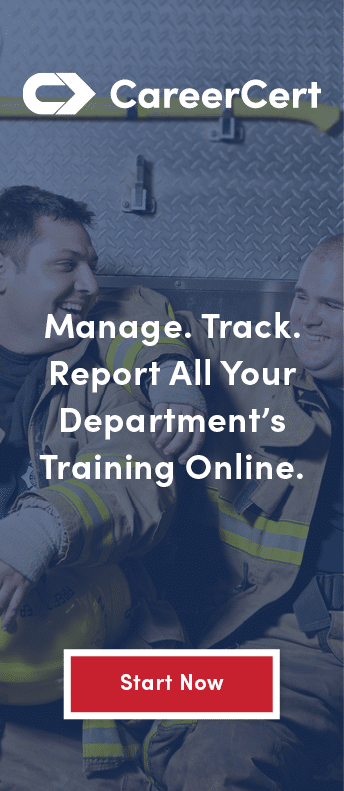Bridging the Gap Between Training and Field Emergencies
 There are currently 891,000 first responders in the United States, with 600,000 EMTs and 142,000 paramedics. Each year, those first responders aid and transport nearly 16 million patients. 1
There are currently 891,000 first responders in the United States, with 600,000 EMTs and 142,000 paramedics. Each year, those first responders aid and transport nearly 16 million patients. 1
But among those thousands of providers, you’ll find various levels of experience and education. Alongside every seasoned veteran is a rookie just starting out along with professionals looking to plan their next career move.
What each of these providers have in common is the need for continuous training. They are trained before they ever ride out on their first call, and they continue to train throughout their entire careers. But these professionals will tell you that responding to real field emergencies is often different than the scenarios you undergo in training.
How can we bridge this gap and help professionals at all levels gain confidence in their skills?
Building Confidence
The key to confidence in the field is preparation through education. You can never run through every scenario. You can never fully prepare for the life-threatening situations you may encounter, but you can enter these moments with confidence in your own skills and knowledge.
Your first pillar of self-confidence is your initial EMS training and certification. By successfully completing these courses and examinations, you have proven that you have the basic skills necessary to provide essential aid and save lives.
Your second pillar of self-confidence comes through recertification and continuing education.
When it comes to life-or-death situations, the quality of the training matters. Whether you are recertifying for the third or thirteenth time, courses can often feel stale and cause us to tune out and possibly miss crucial information. Look for continuing education that not only checks the boxes but is engaging and helps you learn and retain more. For example, at CareerCert, we provide courses on industry-leading topics by passionate experts with 100+ years of experience. We also provide a variety of learning modes—from scenario-based education to virtual instructor-led training to self-paced courses and case studies—to ensure that what your learning can bridge that gap and improve patient outcomes.
Your third pillar of self-confidence is your actual experience in field emergencies. Remind yourself of the times when you responded effectively and helped your patient. Focus on the positives and learn from the times when things don’t go as planned. Take advantage of the experience, knowledge, and skills of those on your team.
All of these methods contribute to the confidence you feel as you arrive on a scene and care for patients.
Career Advancement
The gap between what you learn in training and how you respond in everyday practice isn’t exclusive to those who are at the start of their careers. The more years or even days that pass between training and refreshing your skills, the more you lose muscle memory and the ability to act quickly and decisively.
As Jason Haag, CCEMT-P, CIC, SFI, explains about the importance of persistent training, “In moments of high stress, the body’s heart rate increases, as does peripheral vasoconstriction. This causes a loss in fine motor movement. This leaves us to rely on muscle memory during stressful situations. This alone should be enough reason to not only prepare but train.”3
By the time EMS professionals reach the middle of their careers, many are re-assessing their planned paths and looking for options for career advancement. Continuing education is a great place to start.
By completing essential certifications and going above and beyond to continue their education, mid-level EMS professionals not only refresh their skills but they improve patient outcomes and also set themselves apart from other candidates for career advancement. (For more about how continuing education can benefit your career, check out a few of our tips on improving your EMS career).
CareerCert
If you are interested in building confidence and advancing your career through EMT or paramedic continuing education, take advantage of our expanding library of live refreshes and 300+ hours of continuing education you can pursue at your own pace and on your own time.
Sources
- ASCF. What do first responders do to preserve our freedom? ASCFUSA.org. Dec 2019. https://ascfusa.org/first-responders/.
- CareerCert. Courses. Careercert.com. Dec 11, 2019. https://careercert.com/courses/.
- Haag, J. Mass Casualty Incidents: How To Be Prepared. Careercert.com. Jan 21, 2020. https://careercert.com/blog/ems/mass-casualty-incidents-how-to-be-prepared/ .
- CareerCert. 5 Ways Continuing Education Can Improve Your EMS Career. Careercert.com. Nov 20, 2019. https://careercert.com/blog/ems/5-ways-continuing-education-can-improve-your-ems-career/.



